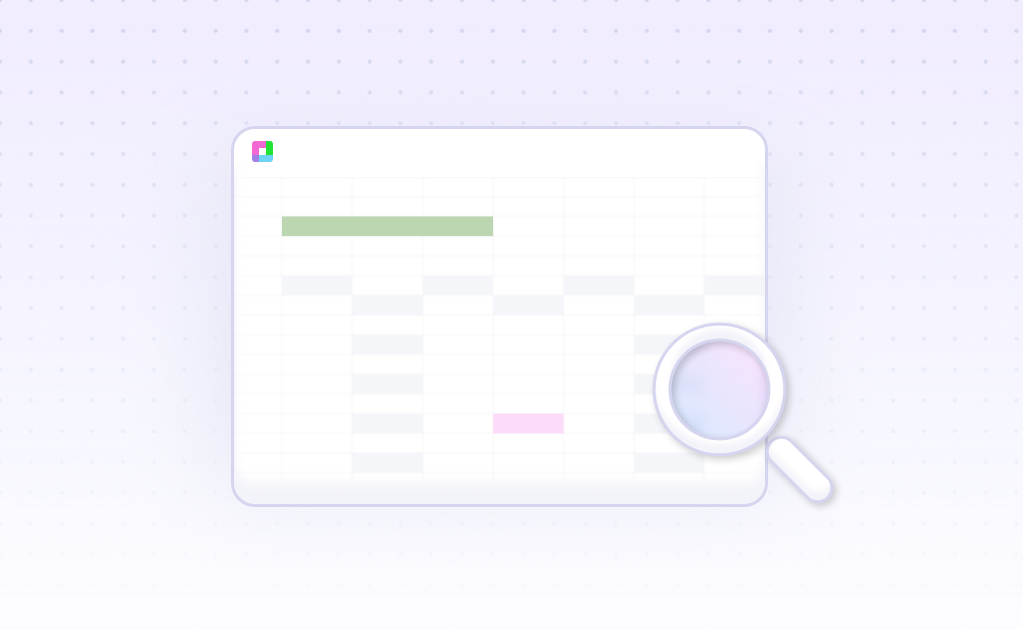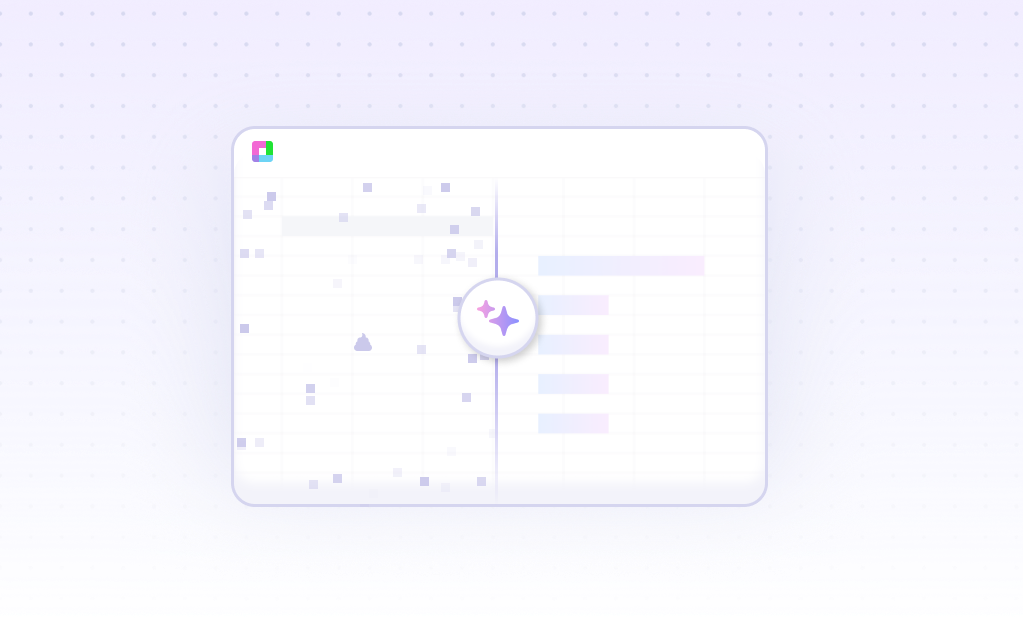
Why Water Quality Analysis Matters
Water quality monitoring is the backbone of environmental protection. Whether you're tracking pH levels in a watershed, monitoring dissolved oxygen in aquaculture systems, or analyzing turbidity patterns across sampling sites, the data tells a story that can impact entire ecosystems.
The challenge? Environmental data is messy, complex, and often overwhelming. Traditional spreadsheet tools leave you wrestling with formulas instead of focusing on the insights that matter. That's where intelligent analysis transforms your workflow.
Water Quality Analysis in Action
See how environmental professionals use intelligent spreadsheet analysis to solve real monitoring challenges.
Lake Ecosystem Monitoring
Track seasonal changes in pH, dissolved oxygen, and nutrient levels across multiple sampling points. Identify pollution sources and seasonal patterns that affect aquatic life health.
Municipal Water Treatment
Monitor chlorine residuals, turbidity, and bacterial counts throughout the treatment process. Ensure compliance with safety standards and optimize treatment efficiency.
Agricultural Runoff Assessment
Analyze nitrate and phosphate levels in streams near farming areas. Correlate rainfall data with contamination spikes to guide watershed management decisions.
Industrial Discharge Compliance
Track heavy metals, chemical oxygen demand, and temperature in industrial wastewater. Generate automated compliance reports and identify treatment system issues.
Groundwater Contamination Studies
Map contaminant plumes using well monitoring data. Analyze concentration trends over time and predict contamination spread patterns.
Coastal Water Quality
Monitor salinity, temperature, and bacterial indicators in coastal waters. Track the impact of storms, tides, and human activities on marine ecosystems.
Powerful Analysis Methods for Environmental Data
Go beyond basic calculations with AI-powered analysis tools designed for environmental monitoring.
Trend Analysis
Identify long-term patterns in water quality parameters. Detect gradual changes that might indicate environmental degradation or improvement over months or years.
Statistical Correlation
Discover relationships between different water quality parameters. Understand how temperature affects dissolved oxygen or how rainfall impacts turbidity levels.
Outlier Detection
Automatically identify unusual readings that might indicate equipment malfunction or contamination events. Focus your attention on data points that need investigation.
Compliance Monitoring
Track parameters against regulatory standards. Generate automated alerts when readings approach or exceed permitted limits for immediate action.
Spatial Analysis
Analyze water quality variations across different sampling locations. Identify pollution hotspots and understand how contamination spreads through water systems.
Seasonal Patterns
Understand how water quality changes with seasons. Predict when certain parameters might fluctuate and plan monitoring efforts accordingly.
Step-by-Step Analysis Examples
Example 1: Lake pH Monitoring
A environmental consultant needs to analyze pH data from a lake monitoring program. They have monthly readings from 12 sampling points over 3 years, but the data shows concerning variations.
The Challenge: Raw data shows pH values ranging from 6.2 to 8.9, but it's unclear if these represent natural variation or environmental stress. Traditional analysis would require complex formulas and multiple pivot tables.
The Solution: Using AI-powered analysis, simply ask: "Show me pH trends by sampling location and identify any concerning patterns." The system immediately highlights two sampling points with declining pH trends and one location with unusual seasonal spikes.
The Result: Clear visualization shows that sites near residential development have declining pH, while the site with spikes correlates with agricultural fertilizer application periods. This insight guides targeted remediation efforts.
Example 2: Dissolved Oxygen Analysis
An aquaculture facility monitors dissolved oxygen levels throughout their pond system. They collect readings every 4 hours from 8 different ponds, generating massive datasets that are difficult to analyze manually.
The Challenge: Fish health depends on maintaining dissolved oxygen above 5 mg/L, but readings fluctuate with temperature, weather, and biological activity. Traditional spreadsheets can't easily correlate these multiple variables.
The Solution: Ask the AI: "Which ponds show the strongest correlation between temperature and dissolved oxygen decline?" The analysis reveals that shallow ponds experience dangerous oxygen drops during hot afternoons.
The Result: Armed with this insight, the facility installs additional aeration in problematic ponds and adjusts feeding schedules to prevent fish stress during low-oxygen periods.
Example 3: Contamination Source Identification
A watershed monitoring program detects elevated nitrate levels in a stream system. With data from 15 sampling locations and multiple potential pollution sources, identifying the contamination source seems impossible.
The Challenge: Nitrate levels spike unpredictably at different locations. Potential sources include agricultural runoff, septic systems, and industrial discharge. Manual analysis would take weeks.
The Solution: Use AI analysis to ask: "Map nitrate concentration patterns and correlate with rainfall data." The system reveals that spikes occur 2-3 days after heavy rainfall and are concentrated in specific sub-watersheds.
The Result: The analysis points to agricultural areas with poor nutrient management as the primary source. This evidence supports targeted education programs and best management practices in those watersheds.
Your Water Quality Analysis Workflow
Transform raw monitoring data into actionable environmental insights with this streamlined process.
Import Your Data
Upload water quality data from any source - field instruments, lab results, or monitoring databases. The system automatically recognizes common parameters like pH, dissolved oxygen, turbidity, and contaminants.
Ask Questions Naturally
Instead of building complex formulas, simply ask questions like 'Which sampling sites show declining water quality?' or 'How does rainfall affect turbidity levels?' The AI understands environmental monitoring terminology.
Get Instant Analysis
Receive immediate insights with clear visualizations. See trend lines, correlation matrices, and statistical summaries that would take hours to create manually in traditional spreadsheets.
Generate Reports
Create professional environmental reports with automated charts, tables, and summaries. Include compliance status, trend analysis, and recommendations for stakeholders and regulatory agencies.
Essential Water Quality Parameters
Understanding which parameters to monitor and analyze is crucial for effective water quality assessment. Here are the key indicators that tell the story of aquatic ecosystem health:
Physical Parameters
Chemical Parameters
Biological Parameters
Frequently Asked Questions
Can I import data from field instruments and lab management systems?
Yes, you can import water quality data from virtually any source including CSV files, Excel spreadsheets, database exports, and direct connections to many environmental monitoring systems. The platform automatically recognizes common parameter names and units.
How does the AI understand environmental monitoring terminology?
The AI is trained on environmental science terminology and understands parameters like pH, dissolved oxygen, turbidity, BOD, and regulatory standards. You can ask questions using natural language without needing to know complex formulas.
Can I create compliance reports for regulatory agencies?
Absolutely. The system can generate professional reports that include trend analysis, statistical summaries, compliance status against regulatory standards, and visualizations suitable for environmental impact assessments and regulatory submissions.
What types of statistical analysis are available for water quality data?
You can perform trend analysis, correlation studies, outlier detection, seasonal pattern analysis, and statistical comparisons between sampling locations. The AI can also help with more advanced analyses like regression modeling and time series forecasting.
How do I handle missing data or quality control issues?
The platform includes tools for data quality assessment, missing value identification, and outlier detection. You can flag questionable data points, apply quality control rules, and generate reports on data completeness and reliability.
Can I analyze spatial patterns in water quality data?
Yes, you can analyze spatial patterns by comparing data across different sampling locations. The system can identify pollution hotspots, map contamination gradients, and help understand how water quality varies across watersheds or water bodies.
What visualization options are available for environmental data?
The platform offers various visualization options including time series plots, scatter plots for correlations, box plots for comparing locations, heat maps for spatial data, and custom charts for regulatory reporting. All visualizations are automatically generated based on your analysis needs.
How do I set up automated monitoring alerts?
You can set up automated alerts based on regulatory thresholds, statistical limits, or custom criteria. The system will notify you when parameters exceed acceptable ranges, helping you respond quickly to potential water quality issues.
Frequently Asked Questions
If your question is not covered here, you can contact our team.
Contact Us




